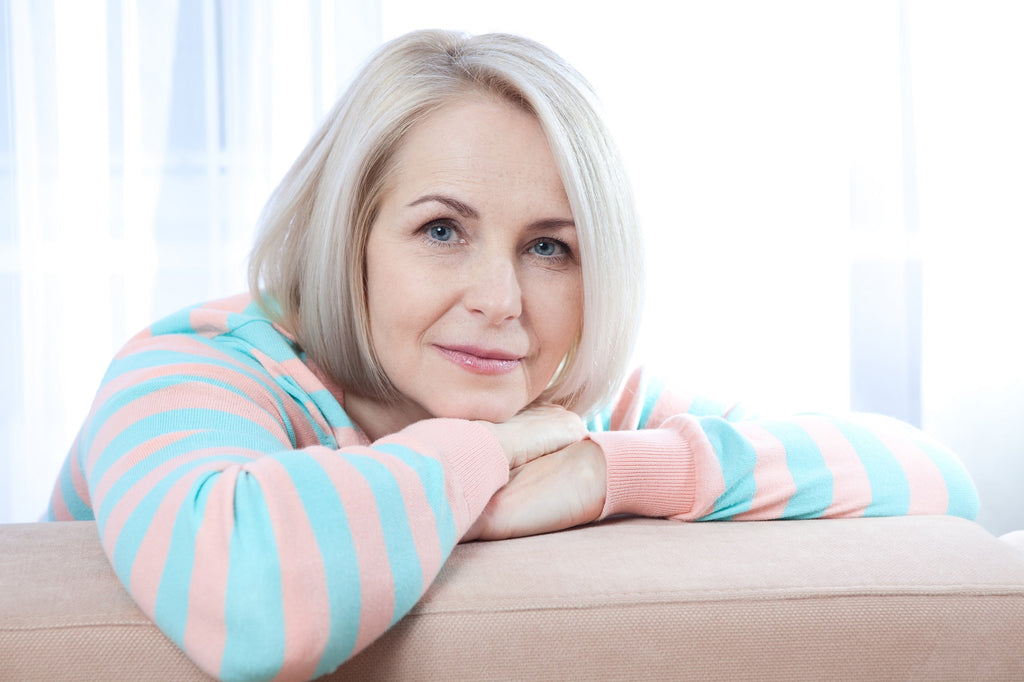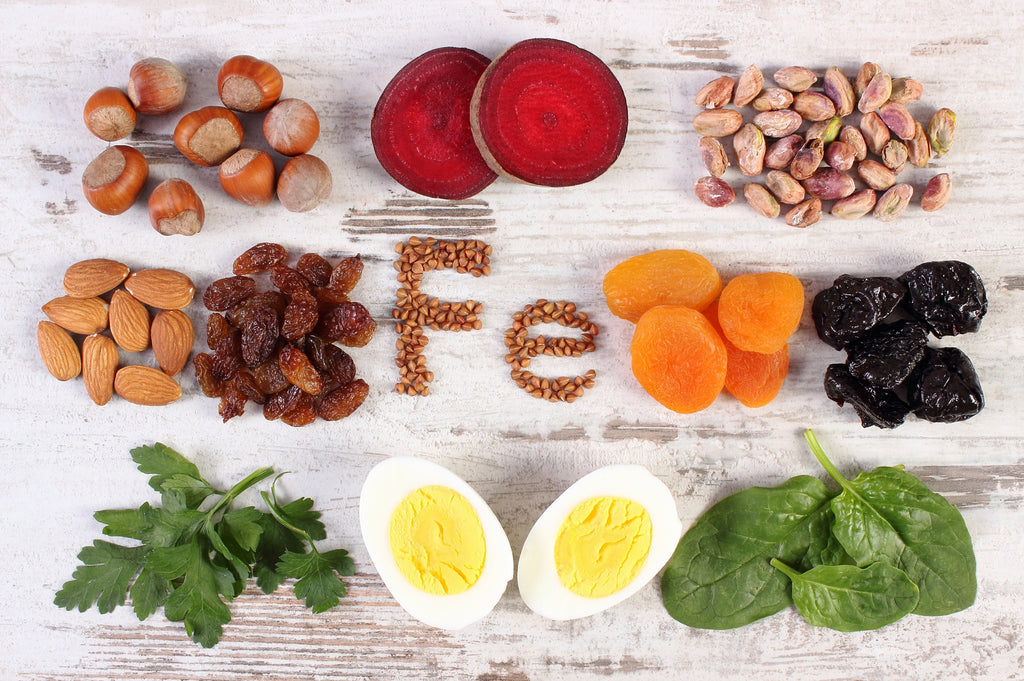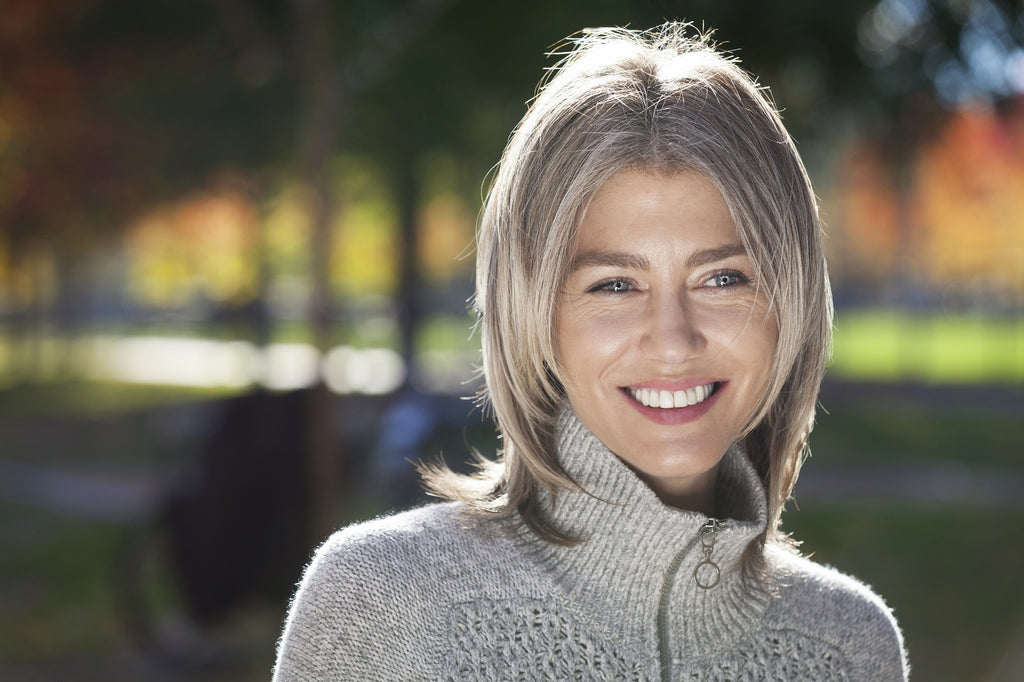
15 Lifestyle Changes for Stronger and More Beautiful Hair and Nails
, by Guest Writer, 12 min reading time

, by Guest Writer, 12 min reading time
Carmela Pengelly is a dietary therapist and nutritional therapist, trained in the UK.
She now lives in Perth, Western Australia, where she practices as a nutritionist, specializing in SIBO (small intestinal bacterial overgrowth), methylation issues, and vegan/vegetarian diets. She also offers consultations outside of Australia, via Skype.
Learn how the food you eat, supplements you take, and the vitamins and minerals you may be deficient in can impact the health of your hair and nails.
If every day seems like a bad hair day and your nails are a shocking sight, don’t despair. Recent discoveries about what causes hair and nail problems are being made and there are now plenty of natural solutions available that are worth trying.

Hair and nails are both largely made of a tough fibrous protein called keratin. The visible parts are dead, but to make healthy hair and nail cells we need a good supply of nutrients to support the activity that is going on beneath the surface of the skin.
|
NUTRIENT |
BEST WAY TO SUPPLEMENT |
BEST FOOD SOURCE |
|
Zinc amino acid chelate (including zinc glycinate), zinc citrate and zinc gluconate are all well absorbed by the body. Take at least 10 mg per day. |
Meat, oysters, pumpkin seeds, baked beans |
|
|
Biotin (sometimes called B7 or vitamin H) |
Take a minimum of 2.5 mg per day if you suffer poor hair and nail health. |
Eggs, avocado, cheddar cheese, yeast |
|
Silica |
Take around 10 mg per day. The herbal supplement, Horsetail, is also a good source of silica. |
Beer! grains, bananas |
|
Protein (amino acids) |
Choose either protein powder or collagen. |
Meat, fish, eggs, tofu, bone broth |
|
Sulforaphane |
Try broccoli sprout powder. |
Broccoli, cauliflower, Brussel sprouts, cabbage, bok choy |
|
Iron |
Check for anaemia first with your doctor |
Meat, oysters, lentils, spinach |
|
For a deficiency, a high oral dose of 1-2000 mcg a day is effective and generally safe. Consult an expert if you are unsure. |
Fish, poultry, seafood, eggs |
It can be distressing when your hair starts thinning and your nails become unsightly. While nail and hair growth is largely determined by genetics, we can still improve their condition once we know the underlying problems.
In developed countries, most get plenty of calories, but, paradoxically, we may still suffer malnutrition if we’re starved of essential micronutrients (e.g. vitamins and minerals).
Malnutrition can occur when you’re not properly absorbing nutrients in the gut.
Conditions linked with malabsorption include:
If you think your absorption is compromised, it’s worth taking protein powder every day, as well as a good quality vitamin and mineral supplement that contains zinc, folate, B12, iron (if tests show you’re deficient) and biotin.
Biotin is particularly useful in strengthening brittle nails.
Beware of meal replacement diets that don’t supply healthy amounts of protein and vitamins and minerals. You may lose weight but it can have a negative impact on your hair and nails at the same time.
Fad diets that only allow a limited range of foods will cause the same problems, as will fasting for too long and following very low calorie diets.
Thinning hair can be one of the toughest symptoms to deal with as we age. More than a third of women become partially bald by the time they reach 70.

When women reach menopause, the growth phase for hair becomes shorter so hair sheds faster than it can be replaced.
The underlying hormonal process is not well understood, but it is thought that oestrogen stimulates hair growth. As our production of this hormone drops off, sadly, so does hair growth.
At the same time, women produce more biologically active ‘free’ testosterone. Some is metabolized into the hormone, DHT (dihydrotestosterone). DHT causes hair miniaturization, where the hair follicles shrink and hair grows finer and shorter and shorter over time.
This so-called androgenic alopecia is the most common cause of hair loss in both men and women.
Men like to think that baldness is a sign of lots of testosterone and therefore lots of virility. This isn’t strictly true as male pattern baldness is more influenced by DHT.
Those who are genetically programmed to be more sensitive to this hormone will lose more hair than others.
Bear in mind that you’re more likely to see improvements if you tackle the problem early on.
Since DHT is the main culprit in most cases of hair loss, it stands to reason that most treatment strategies focus on inhibiting production of this hormone.
Natural DHT inhibitors include:
Phytoestrogens work in several different ways to improve hair growth and quality. They are DHT inhibitors, but they also promote hair growth and help you keep your natural colour by increasing your body’s natural growth hormone.
Phytoestrogens from soy also help to promote stronger, healthier nails.
Good sources of phytoestrogens include:
Saw Palmetto is usually found in supplements for prostate health, but both sexes can use it to support hair health.
Research has shown that pumpkin seed oil is an effective DHT inhibitor. In one study, participants achieved a phenomenal 40% increase in hair after 24 weeks of treatment using 400 mg pumpkin seed oil capsules.
Chinese knotweed is also known as Polygonum multiflorum or Fallopia multiflora or Fo-Ti. Make sure you consult a reputable herbalist if you want to try this herb.
Zinc is also crucial to growing long, strong nails.
Blend together:
Anaemia is a common cause of hair loss and weak, ridged nails.
This can be because you’re not absorbing minerals well or because you’re not meeting your body’s iron needs through diet.

Before taking an iron supplement, it’s best to have your iron and ferritin levels checked by your doctor. Ferritin will show you what your iron stores are – if this is low, you’re likely to suffer hair loss.
Keep in mind that if your iron and ferritin levels are on the low side but still within the ‘normal’ range, you can still suffer hair loss.
Megaloblastic anaemias (including pernicious anaemia) are where your body lacks B12 and/or folate (folic acid). Supplementation is important here and new research shows that you don’t have to resort to painful B12 injections as oral supplementation at high doses is safe and as effective.
Remember that hair grows at a rate of only around 10 mm per month, so it may take several weeks to see results of any changes.
Nails grow at a rate of around 1 mm a week so you’ll start to see positive effects more quickly.
Did you know that low-acidity shampoos (e.g baby shampoo) can damage your hair and make it frizzy? Very acidic shampoos reduce electrostatic friction between hairs, giving you shinier, smoother locks.
Try mixing 1/3 cup apple cider vinegar with 4 cups of water and rinse through hair after shampooing or conditioning.
The vinegar also clears any residue of shampoos and conditioners, leaving your hair cleaner and less prone to greasiness.
Don’t worry – you won’t smell of vinegar if you rinse thoroughly.
Can we cheat mother nature and prevent our hair from going grey? The answer is yes in some cases.
Research has shown that greying (and hair loss) is often caused by too much oxidative stress. Our cells constantly produce harmful chemicals known as free radicals, which cause oxidative stress. Our environment and lifestyle also causes free radical damage e.g sunlight, smoking, chemical exposure etc.

Healthy cells produce antioxidants to counteract free radical damage. As we get older, we become less efficient at making antioxidants and so oxidative stress increases.
Certain nutrients can reduce oxidative stress and protect hair follicles from damage.
The phytochemical sulforaphane has been found to be the most effective. It works by activating a substance called Nrf2, which switches on cells’ defense mechanisms.
Sulforaphane comes from broccoli, cauliflower and other plants from the Brassica family. You can also buy supplements that contain broccoli sprout powder.
Greying Before Your Time
If your hair is going prematurely grey, you may be lacking in folate. In some cases, simply eating your greens or taking a folic acid supplement can correct this deficiency.
However, some people do not metabolise folic acid properly and can still suffer a deficiency even with supplementation. You can generally fix this by supplementing with the active form of folic acid, methyltetrahydrofolate (MTHF).
If you are older, have any digestive issues, or are vegan, you should also take a B12 supplement, as this vitamin works together with folic acid.
An astounding 50% of the worldwide population suffers from dandruff.
Until recently there was no consensus among experts of the cause of dandruff but recent research points to bacterial and fungal overgrowths as the drivers.
Apple cider vinegar may help to rebalance the microbial population on the scalp and reduce inflammation.
Before shampooing your hair, mix 1 part vinegar to 1 part water and dab onto your scalp wherever you can. Leave for around 15 minutes and then shampoo.
Make sure you choose undistilled apple cider vinegar that still contains the ‘mother’ – this is the mass of enzymes, good bacteria and other beneficial microbes.
The microbial population of the gut influences the microbial population elsewhere, including on the scalp, and researchers are finding that supplementing with probiotics can significantly improve dandruff.
In one study, participants reported a 57% reduction in dandruff and a 47% reduction in scalp itchiness when they took the bacterial species, Lactobacillus paracasei.
Learn more about Nu U Nutrition Bio-Cultures Complex, designed to support gut health through probiotic supplementation.
Neem oil is a traditional Indian remedy that has anti-inflammatory, antibacterial and anti-fungal properties. You can apply the oil directly on your scalp, then leave it for a few hours before shampooing.
Nail problems are not only unsightly they can be a sign of an underlying medical condition. See your doctor if you are at all concerned.

Whether you suffer from any of these potential brittle nail symptoms, or you have been struggling with thinning hair, there are many things you can do - from proper supplementation to careful attention to your diet and the things your hair and nails need most.